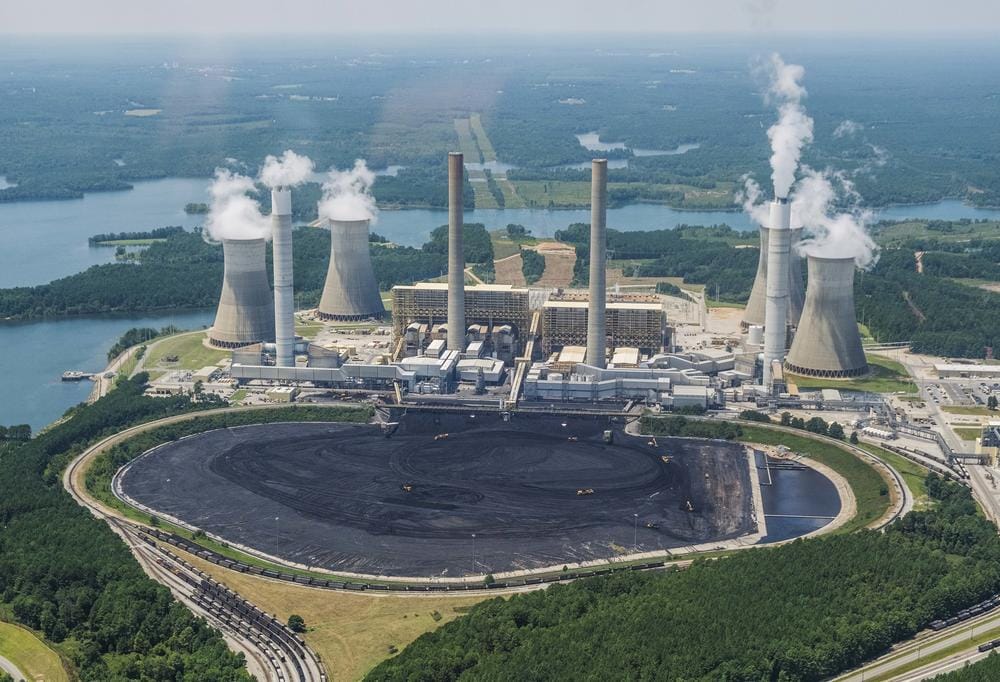- Grid Brief
- Posts
- Fed Mandates // Vanishing Data Centers // PJM Gridlock
Fed Mandates // Vanishing Data Centers // PJM Gridlock
America’s demand curve is rising, but the planning curve is stumbling.
Today’s issue is about mismatches: demand rising faster than supply, forecasts shifting faster than utilities can plan, and grid rules written for an era where the biggest load was a factory—not a hyperscale campus that eats more power than a small city. Across the board, the U.S. is discovering how easily well-intended policies distort markets, delay projects, and harden costs. Let’s jump in.
Federal Mandates Are Quietly Driving Prices Up
A new Wood Mackenzie analysis says U.S. electricity prices are headed up: gas turbines are delayed and pricier, coal extensions are dumping millions onto ratepayers, and new nuclear won’t arrive before 2030. With 90 GW of new peak demand coming, they argue fossil and nuclear won’t keep up — and prices rise.
But another dataset pushes back: research covered recently in the Washington Post shows that states with the fastest demand growth have actually seen lower electricity prices, because big, round-the-clock buyers (AI data centers) spread fixed grid costs over more throughput. More demand → more revenue → lower per-unit costs.
So which vision wins? Simple: prices rise when the government constrains supply, not when industry expands demand.
If the U.S. keeps throttling new gas, slowing down nuclear, and reviving plants through emergency orders instead of building replacements, WoodMac’s outcome is inevitable. If markets are allowed to build freely — and data centers are treated as anchor tenants rather than culprits — the second study is the more credible path: growth lowers prices.
Either way, demand isn’t the problem. Policy friction is.
Data Centers Blink, Georgia Power Backtracks

Georgia Power just removed 6 GW of expected demand from its long-term outlook—enough electricity to power all Atlanta households more than three times over. A cluster of data centers either canceled or paused plans, temporarily deflating the utility’s projections. But don’t mistake the dip for a reversal. Of 28 large-load projects:
18 have broken ground,
10 are pending,
meaning the buildout is still very real.
Complicating this: two newly elected Democrats on the Public Service Commission campaigned on reversing rising power bills just as the utility seeks approval for a major generation expansion that would add ~$20/month to bills.
Developers want more capacity, regulators want lower rates, and the timing of demand is unpredictable. This is exactly how utilities end up building too little, too late, or too expensively. Planning for hyperscale load in a political environment is like trying to pour concrete during an earthquake.
PJM Data Center Rulemaking Implodes
PJM stakeholders couldn’t reach agreement on any of the 12 proposals for new large-load interconnection rules. Zero achieved the required two-thirds support.
The stalemate highlights an uncomfortable reality:
PJM’s footprint—home to the world’s largest data center hub—is already short on generation, slow to build new resources, and saddled with rules designed for a pre-AI grid. Key tensions include:
Ratepayer protections vs. industrial load growth
5–7 year resource build timelines
Rising capacity prices
Lack of fast-track rules for loads that bring their own supply or accept curtailment
The proposal that drew the most support focused on price-responsive demand—allowing data centers to accept firm curtailment or bring their own generation/storage in exchange for faster approval.
PJM's board will now draft its own filing for FERC. But the original timeline—to finalize before June’s 2028/29 capacity auction—is slipping out of reach. If the U.S. wants the benefits of hyperscale computing, it needs a grid that treats large loads as partners, not intruders.
Upgrade to Grid Brief Premium to get extra deep dives into energy issues all over the world.
Conversation Starters
WSJ — Can the U.S. Still Build Large Nuclear Reactors?
America’s nuclear sector has the know-how but not the manufacturing base, workforce, or permitting rhythm to build big reactors on predictable timelines. The gap isn’t technical—it’s institutional.
BBC — A Heartwarming AI Story That Says More About Us Than The Bots
BBC covers an AI system behaving “emotionally.” Not a sign of consciousness—just a statistical model imitating what it sees. A reminder that AI mirrors the chaos of its training data, not inner life.
Bloomberg — Meta Wants to Become a Power Trader
Meta and Microsoft are seeking federal approval to trade electricity wholesale—following Apple’s lead.
Why? So they can underwrite new generation for their data centers and hedge the risk by selling excess power into wholesale markets.
This is what urgency looks like when institutional permitting can’t keep pace.
GOOD BET — Fluence (FLNC)
Storage is becoming the backbone of every new large-load strategy—price-responsive demand, co-located firming, and fast-ramp dispatch all lean on batteries. Fluence sits at the intersection of BESS hardware, optimization software, and grid orchestration. They’re positioned squarely in the path of where utilities must go.
BAD BET — Utilities Betting on Forecasted Data Center Demand (e.g., Southern Company)
Georgia Power’s whiplash forecast drop is a warning: utilities using speculative hyperscale demand to justify billion-dollar buildouts are exposed when plans slip, regulators flip, or developers relocate. The combination of political rate pressure, rising turbine costs, and volatile demand makes this a risky place to park capital.
We rely on word of mouth to grow. If you're enjoying this, don't forget to forward Grid Brief to your friends and ask them to subscribe!